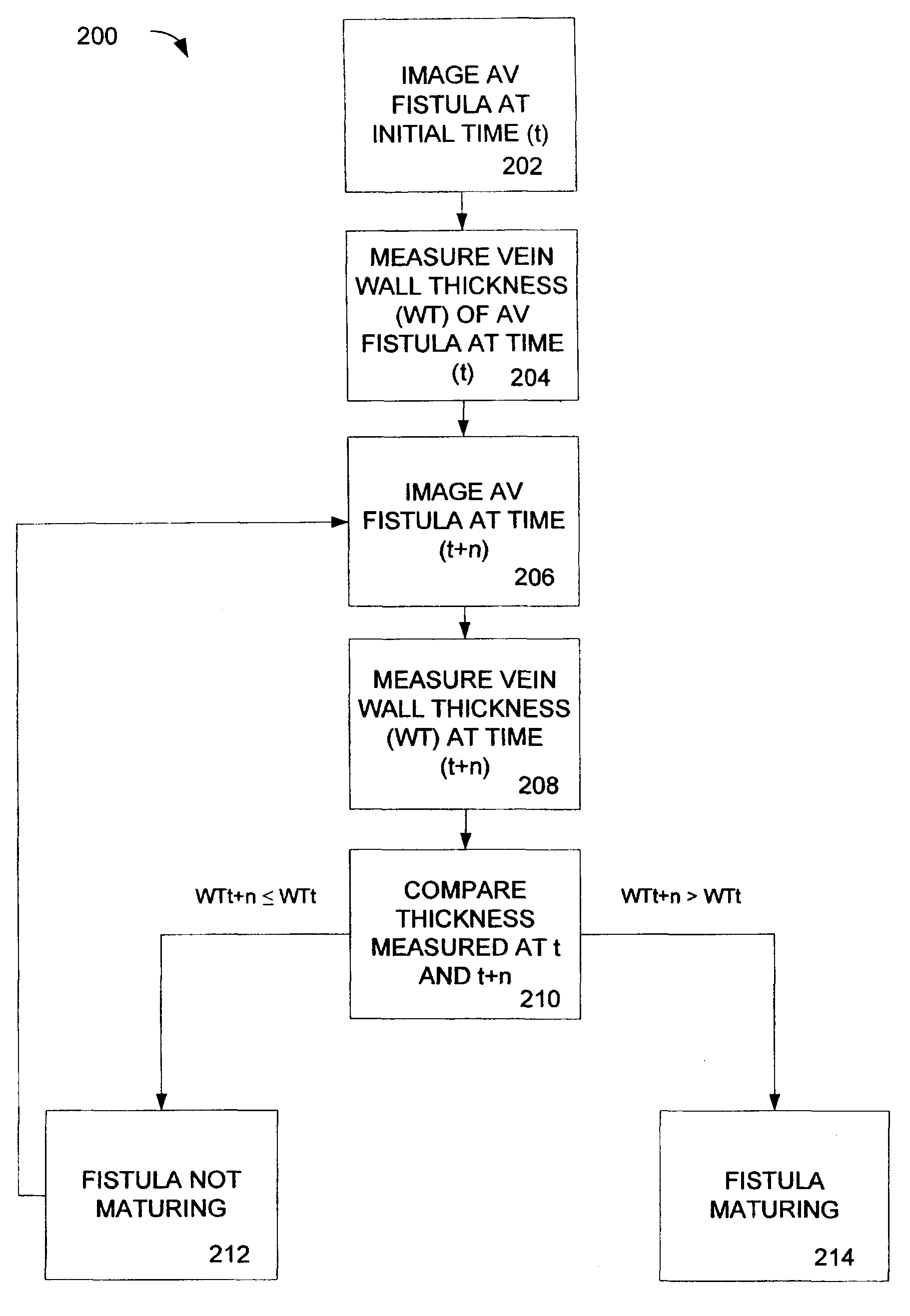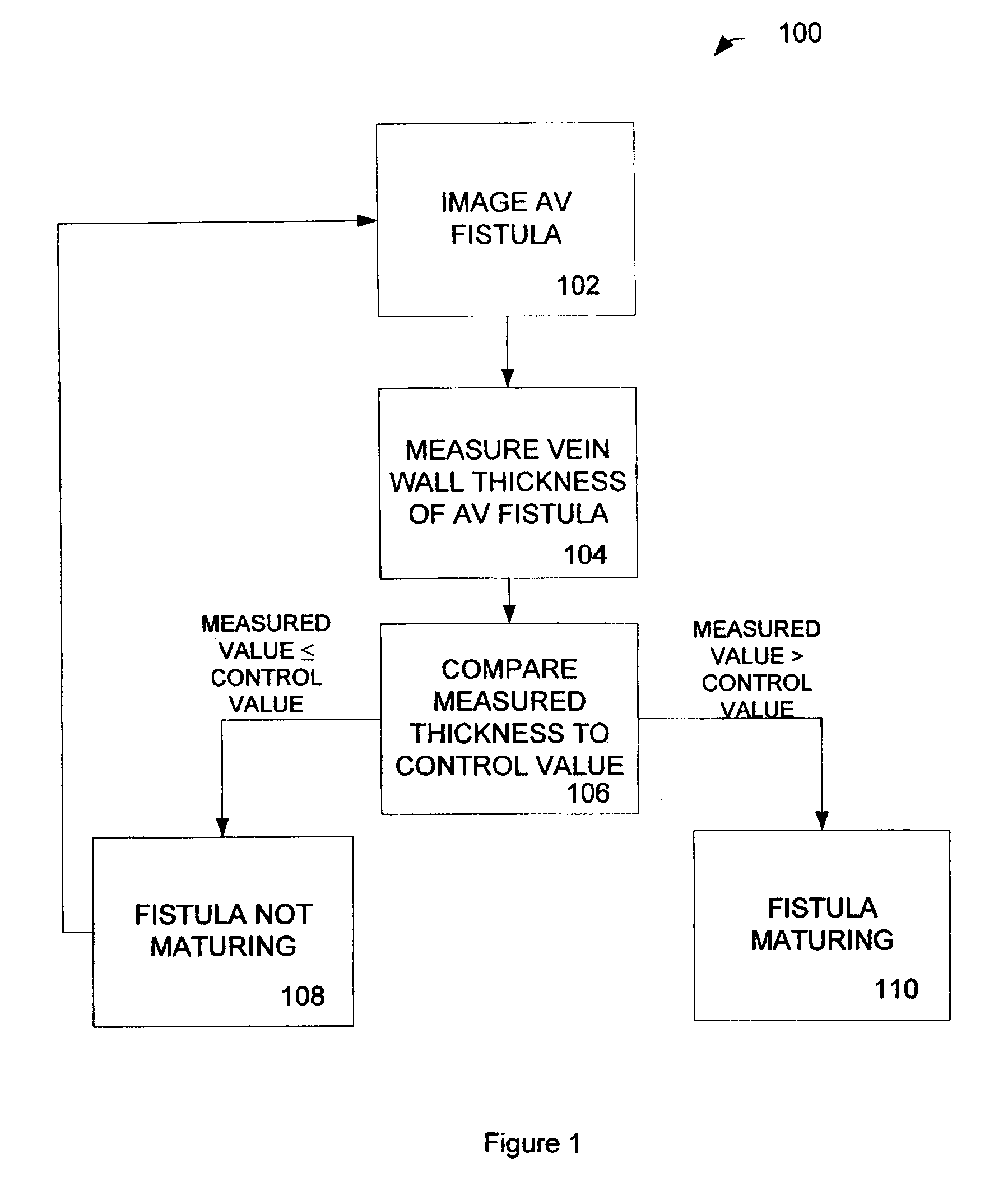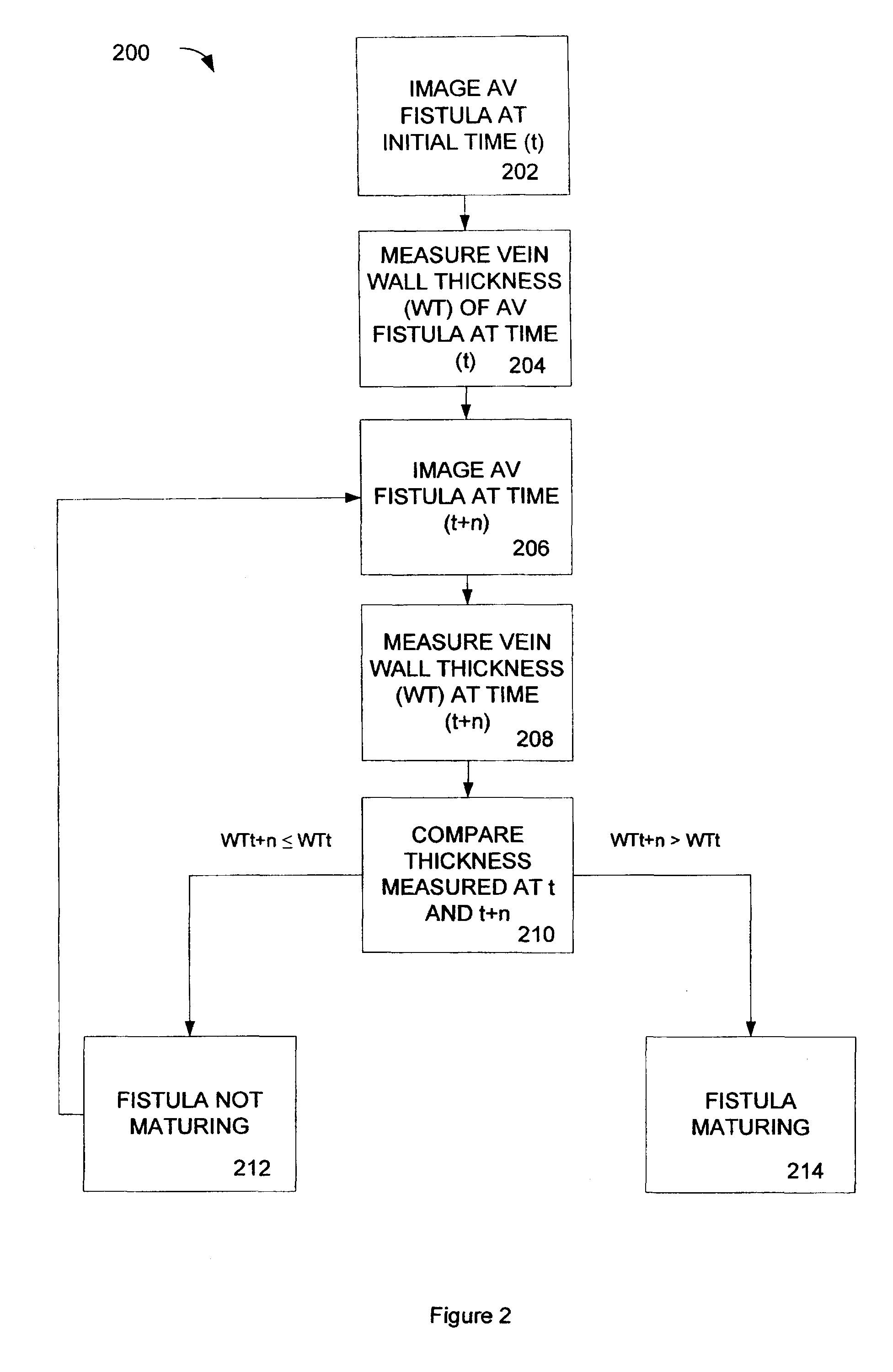Ultrasonic evaluation of venous structures
a technology of venous structure and ultrasonic evaluation, which is applied in the direction of sensors, catheters, diagnostics, etc., can solve the problems of increasing the current challenges of vascular access, and achieve the effect of improving the vascular access ra
- Summary
- Abstract
- Description
- Claims
- Application Information
AI Technical Summary
Benefits of technology
Problems solved by technology
Method used
Image
Examples
example 1
[0068]An exemplary process 400 for analyzing an arterio-venous fistula is shown in FIG. 4. A fistula is longitudinally scanned from the left side and an approximate length is recorded as shown in blocks 402, 404 and 406 respectively. The ultrasound beam is directed perpendicular to the near wall. The minimal luminal diameter and maximal luminal diameter is obtained as shown in block 408. Blood velocity is measured by pulsed Doppler upstream from AVF (arterial end) as shown in block 410. Blood velocity is measured by pulsed Doppler downstream from AVF (venous end) as shown in block 412. Blood velocity is measured by pulsed Doppler within the AVF as shown in block 414. The maximal wall thickness of AVF is measured and the minimal wall thickness of AVF is measured as shown in block 416. Collateral veins within approximately 3.0 cm from the anastomosis are identified as shown in block 418. The process steps can be repeated with an image created from the right side of the fistula as show...
example 2
[0069]A second exemplary process 500 for analyzing an arterio-venous fistula is shown in FIG. 5. A longitudinal ultrasound image of the AVF is captured from the left side as shown in blocks 502, 504, and 506. Measurements from the images on the left side views of the AVF are performed. On the near wall of the AVF a caliper is placed on the bottom of the adventitia (the bottom of the first bright reflection line) and the interface is traced for a 5-7 mm length segment as shown in block 508 and in FIG. 6. A second caliper is placed at the interface where the intima / media meets the lumen (the bottom of the second bright reflection line) and this interface is traced for the same 5-7 mm length as shown in block 518 and in FIG. 6. On the far wall of the AVF a third caliper is placed at the interface where the lumen meets the intima / media (the top the first bright reflection line) and this segment is traced for the same 5-7 mm length as shown in block 512 and in FIG. 6. A fourth caliper is...
PUM
 Login to View More
Login to View More Abstract
Description
Claims
Application Information
 Login to View More
Login to View More - R&D
- Intellectual Property
- Life Sciences
- Materials
- Tech Scout
- Unparalleled Data Quality
- Higher Quality Content
- 60% Fewer Hallucinations
Browse by: Latest US Patents, China's latest patents, Technical Efficacy Thesaurus, Application Domain, Technology Topic, Popular Technical Reports.
© 2025 PatSnap. All rights reserved.Legal|Privacy policy|Modern Slavery Act Transparency Statement|Sitemap|About US| Contact US: help@patsnap.com



